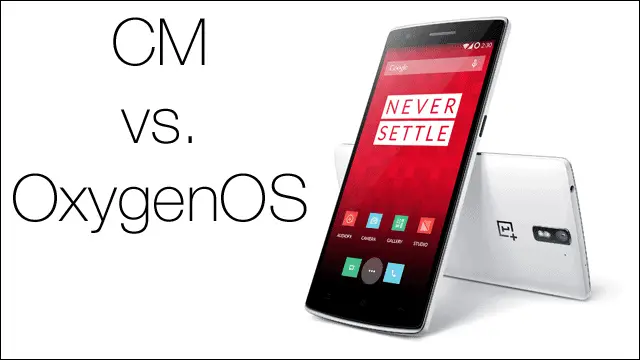
CyanogenMod is going away from OnePlus phones. The custom ROM-turned-legit-Android-alternative, once one of the major selling points of the OnePlus One, is vanishing back into the ether in favor of OxygenOS.
The short version of that story is that Cyanogen decided to do its own thing and got into some fights with OnePlus over distributing CM-equipped phones in India. One corporate spat later, OnePlus is making its own software. Hence, OxygenOS.
For the layman, it can be hard to tell the difference between the old CyanogenMod software and OxygenOS. We’ve broken it down into a few key points of difference.
CyanogenMod vs. OxygenOS
Open Source vs. Closed

CyanogenMod got its start as an open-source custom build of Android. Anyone could see its source code, modify it, fork it, or improve it (and many developers did).
Then Cyanogen went legit. Steve Kondik started a company, which has always been open about its desire to make closed-source, paid-for services. The system components of CyanogenMod, however, remain free and open source.
OxygenOS, by contrast, is entirely closed-source. What you get from OnePlus is what you’ll use on their phones.
The difference might seem minute to people who aren’t FOSS geeks, but it will become critical over time. Open source means users can change the software to run more to their liking. That’s how we got CyanogenMod in the first place.
It means the community can’t fork OxygenOS to make a better version in the form of a custom ROM. Users can do root-level fixes and use Xposed, but not fork the software.
Customized vs. Simple

For software built for a phone bought almost exclusively by techies, OxygenOS is fairly simple. It feels much more like stock Android than any custom ROM.
It ships with vanilla AOSP, gApps and a little basic customization. Not a lot, though, and not anywhere close to the same level as on CyanogenMod.
CM12 is based on Lollipop and is the best version of CyanogenMod yet. It’s fast, stable and full of customization. Every little thing that bothers you can be changed in the CM settings.
People care in varying amounts about whether they can customize their phone… but if you bought a OnePlus One, you probably care a lot and know CyanogenMod is much better at this sort of thing. They still have the best implementation of system-wide themes in Android.
Customization vs. Interesting Gimmicks
CyanogenMod offers fewer software services, putting most of its strength into system-level customization. However, if you do get CM, you can enjoy stuff like the CM file picker and secure texting with other CyanogenMod users.
OnePlus put a few interesting gimmicks into OxygenOS. There’s double-tap to wake, which is always appreciated.
You can also do gestures such as drawing a circle to open the camera or a “v” to toggle the flashlight. Neither of these is especially reliable.
Speed vs. Speed
In terms of performance, the two seem to be equal. TechInAsia benchmarked both OSes and found CyanogenMod just barely edged out OxygenOS.
This is to be expected. Same hardware, similar software that differs only in some implementation and customization.
Final Thoughts
Ultimately, we’d recommend CyanogenMod over OxygenOS. Oxygen is a fine choice for people who don’t care about customization or need something that Just Works.
However, CyanogenMod is a proven entity with options for deep, intensive customization. It’s also fast, free and open-source. That’s a win all around.







